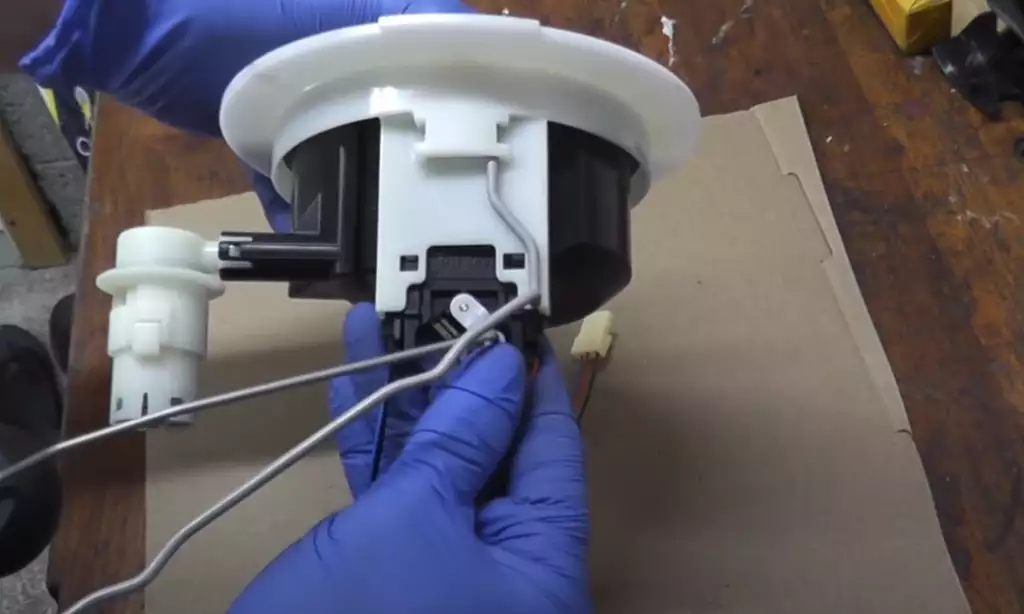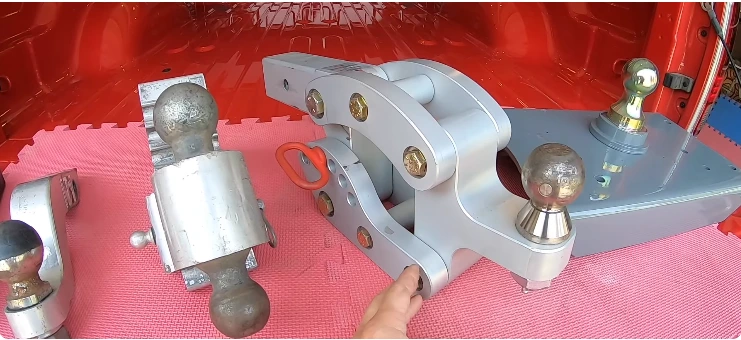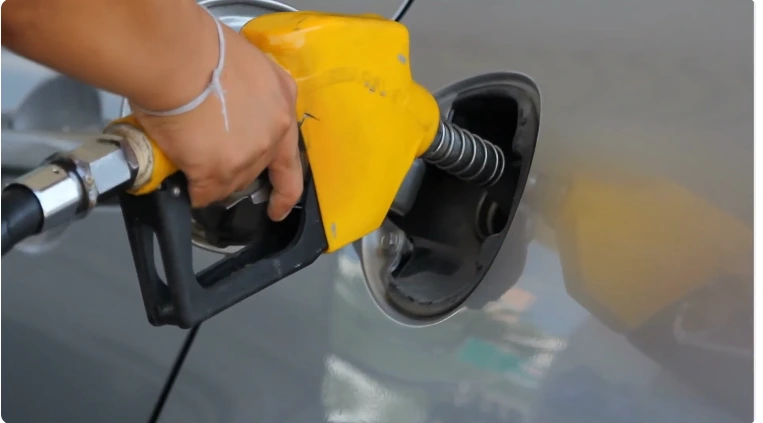Does Your Gas Gauge Suddenly Drop to Empty? (Solution For You)
One of the most frustrating experiences for drivers is when their gas gauge suddenly drops to empty, even though they recently filled up their tank. It can leave you stranded on the side of the road, wondering what went wrong. This unexpected and perplexing issue can be a cause for concern and requires immediate attention.
In this article, we will explore the possible reasons behind a gas gauge dropping to empty unexpectedly. We will delve into both mechanical and electrical factors that can contribute to this problem. From fuel system malfunctions to faulty sensors and wiring issues, there are several potential culprits to consider.
Understanding the causes behind a gas gauge malfunction is crucial to finding an appropriate solution. By diagnosing the issue accurately, you can prevent future incidents, ensure reliable fuel level readings, and avoid unnecessary stress and inconvenience.
Join us as we unravel the mystery of why your gas gauge suddenly drops to empty and discover the steps to resolve this frustrating problem.
How Does a Fuel Gauge Work?
A fuel gauge is a crucial component of a vehicle’s instrument cluster that provides the driver with an indication of the amount of fuel remaining in the tank. Understanding how a fuel gauge works can help us better comprehend the potential issues that can arise with its functionality. Here is a simplified explanation of how a typical fuel gauge operates:
1. Fuel Sender Unit: Inside the fuel tank, there is a component called the fuel sender unit. It consists of a float attached to a variable resistor. The float moves up and down with the fuel level, while the variable resistor changes its resistance accordingly.
2. Voltage Regulator: The fuel sender unit is connected to a voltage regulator, usually located on the instrument panel. The voltage regulator ensures a constant voltage is supplied to the fuel gauge.
3. Gauge Cluster: The fuel gauge is part of the instrument cluster on the vehicle’s dashboard. It contains a gauge needle that moves in response to the resistance signal received from the fuel sender unit.
4. Ground Circuit: The fuel gauge is grounded through the vehicle’s body or a dedicated ground wire. This completes the electrical circuit necessary for the gauge to function.
5. Reading the Fuel Level: As the fuel level in the tank changes, the float in the fuel sender unit moves. This movement alters the resistance in the variable resistor. The change in resistance causes a corresponding change in the current flowing through the gauge, resulting in the needle moving to the appropriate position on the gauge face.
What Happens If Your Gas Gauge Doesn’t Work?
When your gas gauge fails to work properly, it can lead to a range of inconveniences and potential issues. Here are some consequences of a malfunctioning gas gauge:
Uncertainty about Fuel Levels
The primary function of a gas gauge is to provide an accurate reading of the fuel level in your tank. If it doesn’t work, you’re left guessing how much fuel you have remaining. This uncertainty can be frustrating and inconvenient, as you may not know when it’s time to refuel.
Risk of Running Out of Fuel
Without a functioning gas gauge, you are at a higher risk of running out of fuel unexpectedly. This can be particularly problematic if you’re driving in remote areas or late at night when finding a gas station might be challenging. Running out of fuel can leave you stranded and require assistance or delay your journey significantly.
Inaccurate Fuel Range Estimation
Many modern vehicles feature a fuel range estimation display that calculates the approximate distance you can travel based on the remaining fuel. A malfunctioning gas gauge can lead to inaccurate range estimations, making it difficult to plan your trips effectively and causing anxiety about whether you’ll reach your destination without refueling.
Difficulty Monitoring Fuel Efficiency
A functioning gas gauge allows you to track your vehicle’s fuel efficiency accurately. Without it, you cannot accurately calculate fuel consumption or evaluate the impact of driving habits or route choices on your vehicle’s efficiency.
Potential Safety Concerns
A malfunctioning gas gauge can pose safety risks. For instance, if you’re driving on a highway and suddenly run out of fuel, it can lead to hazardous situations, such as getting stranded in a high-traffic area or trying to navigate to the side of the road in heavy traffic.
Resale Value Impact
A non-functional gas gauge can impact the resale value of your vehicle. Prospective buyers may see it as a potential issue that needs to be resolved, and it could affect their perception of the vehicle’s overall condition and reliability.

What Makes a Gas Gauge Stop Working?
Several factors can contribute to a gas gauge stopping working or providing inaccurate readings. Here are some common causes:
1. Faulty Fuel Sender Unit
The fuel sender unit, located inside the fuel tank, consists of a float and a variable resistor. If the float becomes stuck or the variable resistor fails, it can disrupt the signal being sent to the gas gauge, resulting in inaccurate or non-functional readings.
2. Wiring Issues
Problems with the wiring connecting the fuel sender unit to the gas gauge can cause the gauge to stop working. Damaged or loose connections, frayed wires, or corrosion can interrupt the electrical signal and prevent proper communication between the sender unit and the gauge.
3. Gauge Cluster Malfunction
A malfunction within the gauge cluster itself can cause the gas gauge to stop working. This could be due to a faulty gauge, a problem with the voltage regulator that supplies power to the gauge, or an issue with the circuitry responsible for interpreting the signals from the fuel sender unit.
4. Blown Fuse
In some cases, a blown fuse related to the fuel gauge or instrument cluster can cause the gas gauge to stop working. When the fuse is blown, it disrupts the electrical flow to the gauge, resulting in a loss of functionality.

5. Instrument Panel Control Module Failure
In vehicles with advanced electronic systems, a failure in the instrument panel control module (IPC) can affect the operation of the gas gauge and other instrument cluster functions. IPC failures can result from electrical issues, software glitches, or component failures.
6. Calibration or Programming Errors
During repairs or maintenance, if the fuel sender unit is not properly calibrated or the gas gauge is not programmed correctly, it can lead to inaccurate readings or a complete loss of functionality.
7. Physical Damage
External factors such as accidents, impacts, or water damage can cause physical damage to the fuel sender unit or the wiring, disrupting their functionality and causing the gas gauge to stop working.
How to Fix a Gas Gauge That’s Not Working
Fixing a gas gauge that’s not working involves a systematic approach to identify and resolve the underlying issue. Here are some steps you can take to address the problem:
1. Check the Fuse
Start by inspecting the fuse related to the fuel gauge or instrument cluster. If the fuse is blown, replace it with a new one of the same rating. A blown fuse can cause the gas gauge to stop working, and replacing it may restore functionality.

2. Inspect Wiring Connections
Examine the wiring connections between the fuel sender unit and the gas gauge. Look for loose, damaged, or corroded connections. Ensure the connections are secure and clean any corrosion if present. Repair or replace any damaged wiring as necessary.
3. Test the Fuel Sender Unit
To check the fuel sender unit, you may need to remove it from the fuel tank. Follow the manufacturer’s instructions or consult a repair manual for your specific vehicle model. Once removed, inspect the float, variable resistor, and associated components for any signs of damage or malfunction. Test the resistance of the variable resistor using a multimeter to ensure it is within the specified range. Replace the fuel sender unit if it is faulty.
4. Verify Gauge Cluster Functionality
If the fuel sender unit is functioning correctly, the issue may lie with the gauge cluster itself. Consult a professional technician who can use specialized diagnostic equipment to assess the gauge cluster and verify its operation. They can check for any faults within the gauge, voltage regulator, or the circuitry responsible for interpreting the signals.
5. Calibrate or Reprogram
If the fuel sender unit or gauge cluster has been replaced or repaired, it may require calibration or reprogramming to ensure accurate readings. Follow the manufacturer’s instructions or consult a professional technician who can perform the necessary calibration or programming procedures.
6. Seek Professional Assistance
If you are unable to diagnose or resolve the issue on your own, it’s recommended to seek professional help from a qualified mechanic or automotive technician. They have the expertise and diagnostic tools to accurately identify and fix the problem.
FAQ:
Q: Why did my gas gauge suddenly drop to empty?
A: There can be several reasons for a sudden drop in the gas gauge to empty. It could be due to a malfunctioning fuel sender unit, wiring issues, a faulty gauge cluster, or a blown fuse. Each of these factors can disrupt the communication between the fuel tank and the gas gauge, resulting in an incorrect reading.
Q: What should I do if my gas gauge shows empty even though I recently refueled?
A: If your gas gauge shows empty despite recently refueling, there are a few steps you can take. First, double-check that you did indeed refuel the vehicle. If confirmed, it is advisable to visit a qualified mechanic or automotive technician who can diagnose the issue and identify the underlying cause of the sudden drop to empty.
Q: Is it safe to drive when the gas gauge shows empty?
A: It is not recommended to drive when the gas gauge shows empty. While there might be some fuel remaining in the tank, relying solely on the gauge’s reading can be risky. It’s best to refuel as soon as possible to avoid running out of fuel unexpectedly, especially in situations where finding a nearby gas station may be challenging.
Q: Can a faulty gas gauge cause other problems?
A: A faulty gas gauge itself may not directly cause other problems. However, relying on an inaccurate gas gauge can lead to running out of fuel, which can result in being stranded or encountering safety hazards on the road. Additionally, it can make it difficult to monitor fuel efficiency and plan trips effectively.
Q: Can I fix a gas gauge issue myself?
A: Fixing a gas gauge issue may require a certain level of expertise and specialized tools. While simple troubleshooting steps such as checking fuses and wiring connections can be done by some vehicle owners, diagnosing and repairing complex issues are best left to professionals. It’s recommended to consult a qualified mechanic or automotive technician for accurate diagnosis and proper repairs.
Q: How much does it cost to fix a gas gauge problem?
A: The cost of fixing a gas gauge problem can vary depending on the specific issue and the make and model of your vehicle. Simple fixes such as replacing a blown fuse or repairing loose wiring connections may be relatively inexpensive. However, if the problem lies with the fuel sender unit or requires extensive repairs to the gauge cluster, the cost may be higher. It is advisable to consult a professional who can provide an accurate estimate based on your specific situation.
Q: Can a gas gauge issue be covered under warranty?
A: Warranty coverage for gas gauge issues depends on the terms and conditions of your vehicle’s warranty. If your vehicle is still under warranty, check the warranty documentation or contact the manufacturer to determine if the repair costs can be covered. Extended warranty plans may also provide coverage for such issues.






![How Many Seats Does The Ford Explorer Have? [2024]](https://automhelp.com/wp-content/uploads/2024/03/How-Many-Seats-Does-The-Ford-Explorer-Have-2024.webp)